Lesson planning is an essential part of teaching, but what is the best way to do it? We have a simple and practical framework explaining how to lesson plan for new teachers.

What Is the Purpose of a Lesson Plan?
A lesson plan has three purposes.
A Lesson Plan Is for You
Lesson plans are notes and outlines for the material you will be teaching.
If you think of teaching as a form of public speaking (and it is), the lesson plan is the presentation notes.
First and foremost, an effective lesson plan is one that you can follow.
A Lesson Plan Is for the Student
A well-designed lesson plan keeps in mind the learning objectives for your class.
This is why a lesson plan will benefit students: it keeps your class time focused on learning what matters.
A Lesson Plan Is for the Administration
The school administration team oversees your work and needs to know what you are doing.
Are you covering the required materials?
Are you fulfilling learning objectives and targeting the necessary standards?
A lesson plan proves to your administration team that you are doing your job.
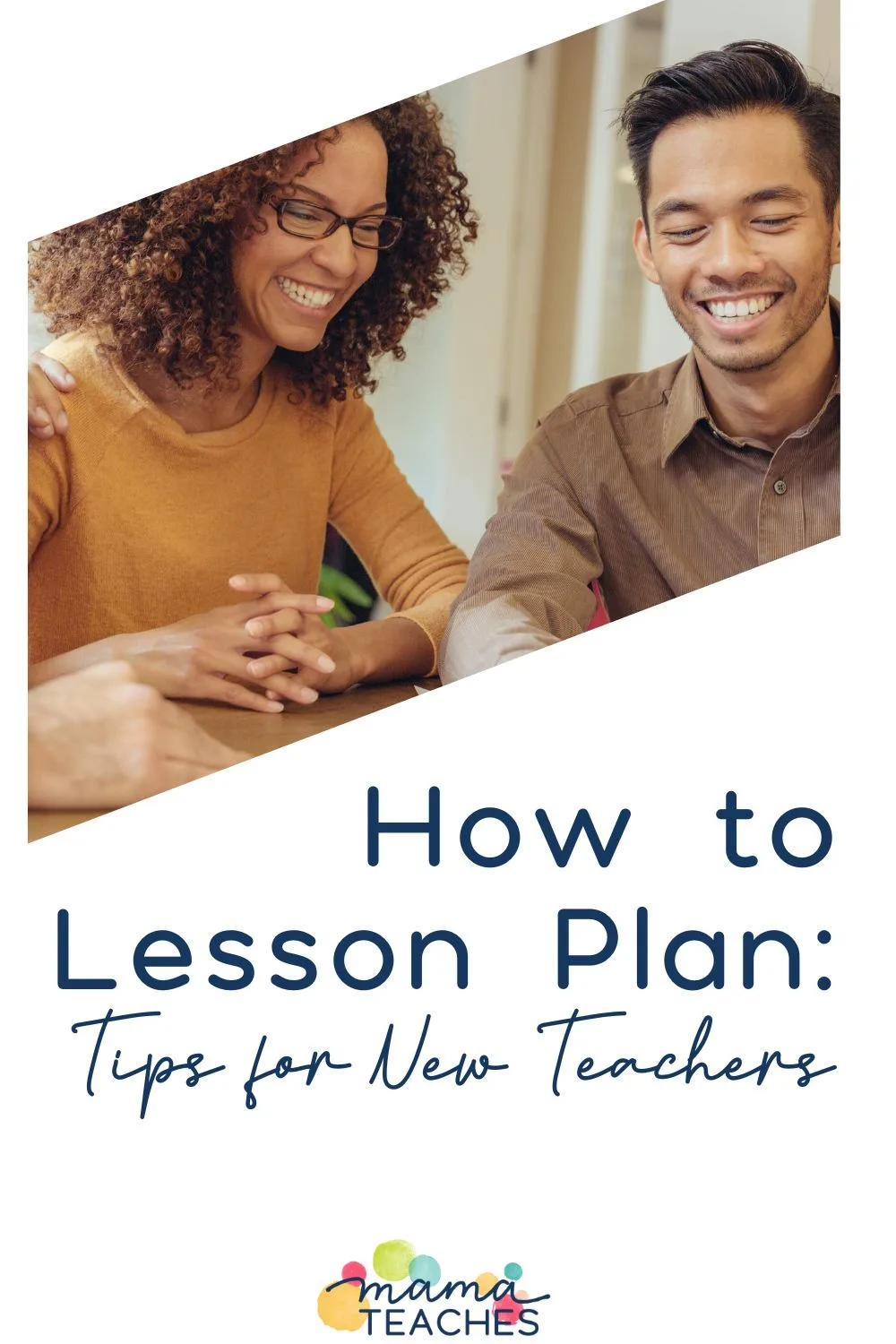
This article contains affiliate links to things that you might like.
How to Write an Amazing Lesson Plan in 6 Simple Steps
If you are a new teacher, lesson planning may take a while. That’s normal.
You will likely over-plan, but that’s okay.
If it helps you to feel calm and prepared, by all means, write a detailed lesson plan!
As time passes, you can teach effectively from a pared-down lesson plan.
Here are some tips on how to lesson plan effectively.
1. Write Down Your Learning Objectives (the “What”)
This is the all-important first step in any lesson plan. What are you teaching?
Likely, you have been given learning objectives by your school. You just need to divvy them up over your school days.
Writing your learning objective first keeps you centered on your goal.
Remember, these are the goals for your students. What do you want them to learn from your lesson?
If your objective is for your third-grade students to learn basic information on the first four planets of the solar system, you don’t want to spend half of class time on Mercury.
Think of lesson objectives as a goal. What do you want your students to know or be able to do by the end of the lesson?
Get to know the acronym SWBAT. Writing “SWBAT” rather than “Students will be able to…” every time in your lesson plan is a time saver.
You will pair your SWBAT with a measurable verb. You can find a list of them in Bloom’s Taxonomy.
Make your lesson plans clear and attainable.
Remember the levels of learning: remembering, comprehending, applying, analyzing, evaluating, and creating.
Think back to the solar system example. Your lesson objectives could be:
- Students will be able to (SWBAT) recall the names of the first four planets. (Remembering)
- SWBAT rephrase a key fact about each planet. (Comprehending)
- SWBAT draw a picture of the first four planets in order. (Applying)
You don’t have to cover every level of learning (younger students often can’t do that anyway) in your lesson objectives.
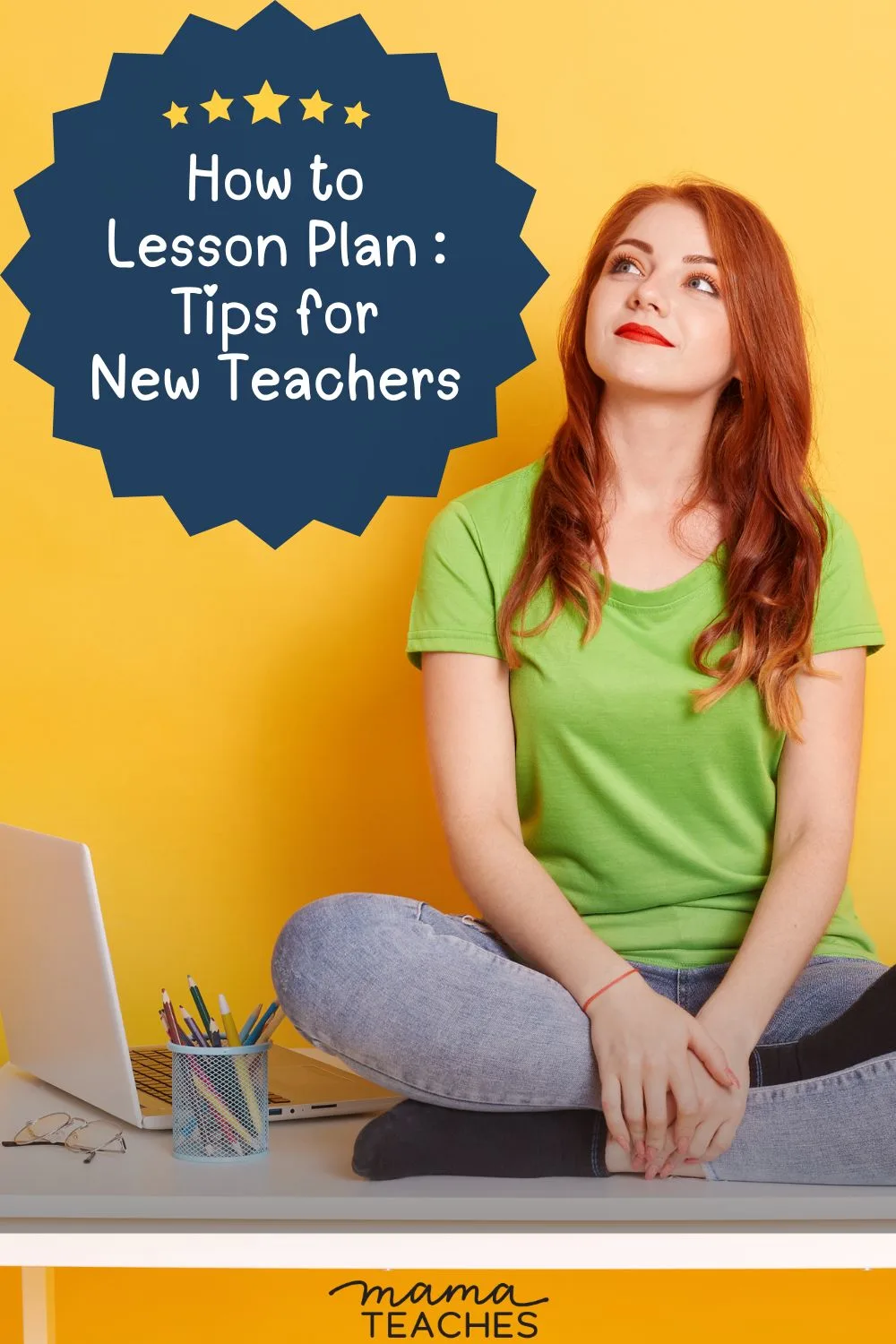
2. Include the Educational Standards (the “Why”)
Your lesson objectives cover what your students are learning. The standards explain why you are teaching it.
Remember, your lesson plan is, in part, for your administration.
You must show that you abide by your local and state educational standards.
A lesson plan typically has 1-3 standards per subject.
Your school may provide you with the standards and objectives already mapped out. It depends on your district or state.
3. Plan Your Lesson Activities (the “How”)
Now that you have what you will teach and why you will teach it, you need to include how you will teach the information.
This is where your list of activities comes in. This is an overview of what you will do in your lesson.
It is a high-level list of what you will do. Here is an example:
- Introduce the solar system by showing a model
- Chant the names of the first four planets
- Give fun facts on Mercury, Venus, Earth, Mars: position, size, composition, moons
- Play four corners with planet facts
- Do a cut-and-paste worksheet with all four planets
If you are a new teacher learning how to lesson plan for the first time, you will likely list more activities than you have time to complete in one lesson block.
Sometimes, a single overview will take you multiple classes to complete. That’s fine as long as you are hitting your lesson objectives.
If you have three days to learn about the inner planets, you can copy and paste your overview over three days.
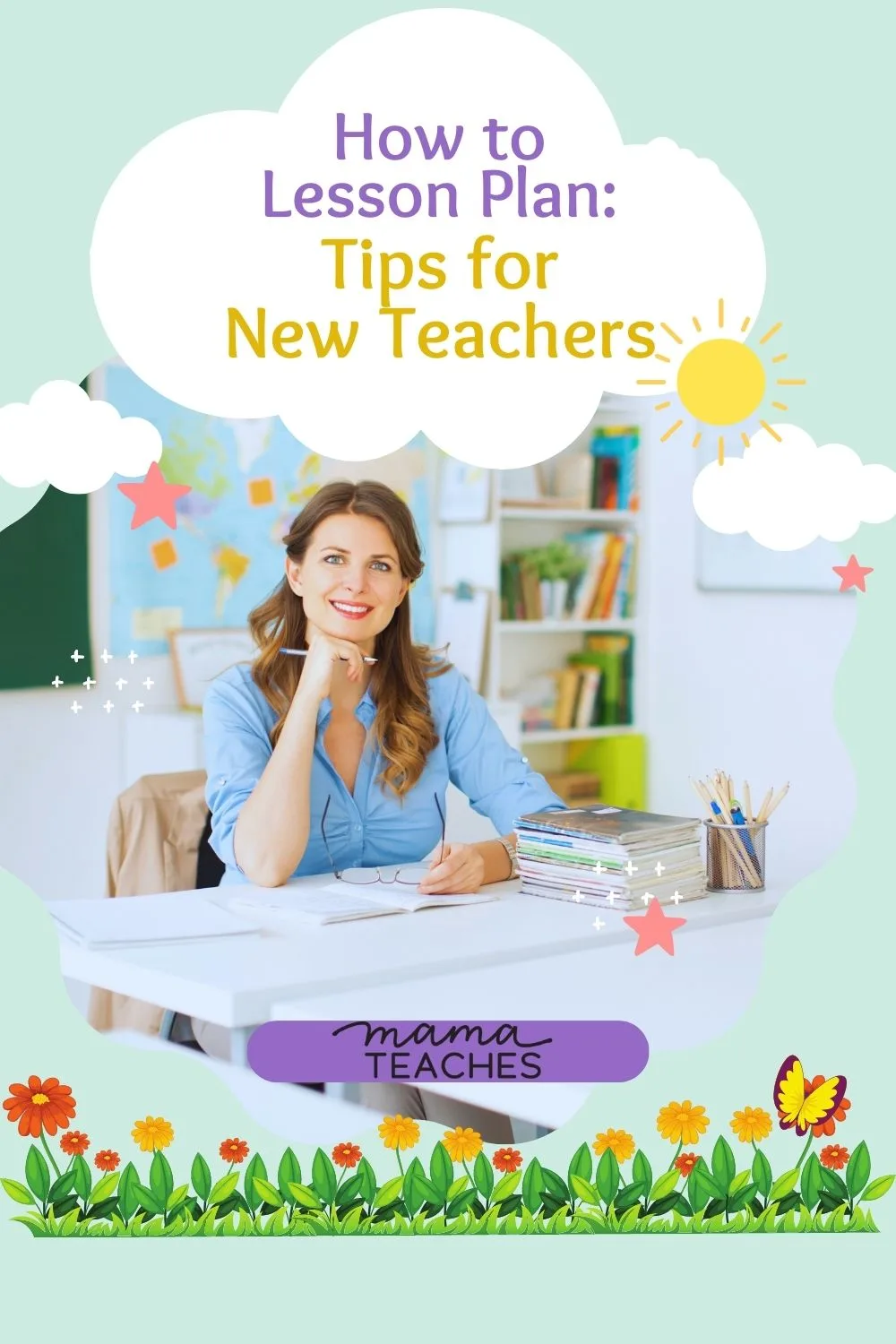
4. Map Out Your Timeline of Activities (the “Nitty Gritty”)
When learning how to lesson plan for new teachers, this is a step you should not skip.
As you gain experience, you can trim down or even eliminate this section (although check to see if your school requires it).
Write down a timeline for your planned activities. That way, you can speed up or slow down as necessary to complete everything.
Here is an example:
- 10:00-10:10: Warm -Up. Show solar system model to bring class into focus. Ask students what they already know about our planet and its neighbors.
- 10:10-10:15: Memory Work. Introduce solar system song
- 10:15-10:30: Present Information. Share basic facts and fun facts about each planet in order: Mercury, Venus, Earth, Mars.
- 10:30-10:40: Guided Practice. Play a game of four corners to match the facts with the planets.
- 10:40-10:55: Main Activity. Hand out cut-and-paste planets and supplies. Provide a model and walk around to ensure accuracy.
- 10:55-11:00 Closing. Collect papers and repeat the song.
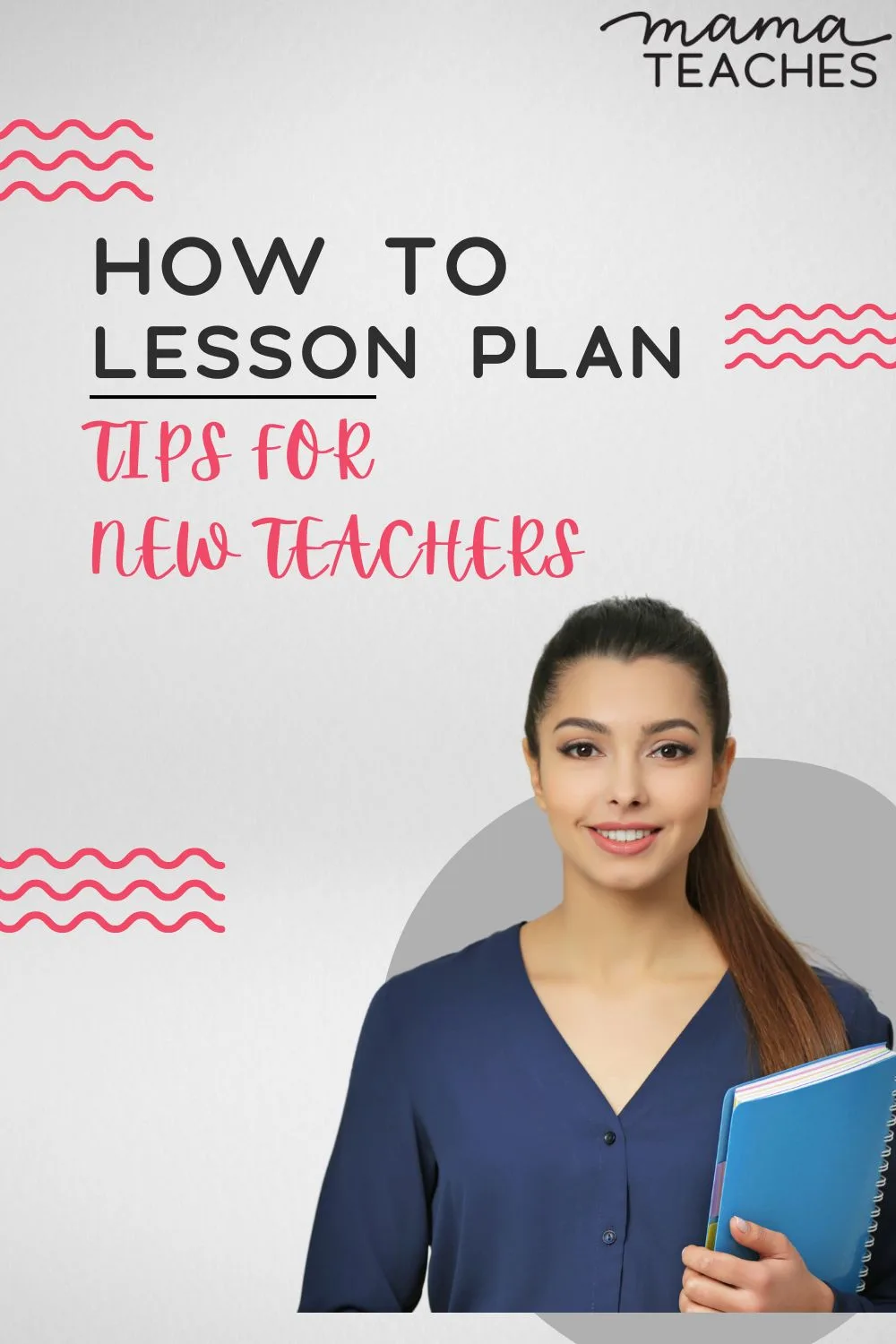
5. Include Your Assessments (the “Check-in”)
You need ways to check in with your students and ensure they are learning what you teach.
These could be tests, quizzes, essays, and projects. These formal assessments are called summative assessments.
Summative assessments typically come at the end of a unit or at a natural break.
Between those times, you can do informal assessments like class discussions, surveys, question and answer time, or group work. These are called formative assessments.
Every lesson should have some form of assessment. Make a note of it in your lesson plan.
6. List Your Supplies (the “Materials”)
You do not need an exhaustive list of supplies (you can skip the usual school supplies like pencils and paper), but you should include the special items.
Do you need a particular worksheet?
Do you need a link to a specific video?
Which books should the students have for class so they can follow along?
These are the types of items you should include on your supply list.
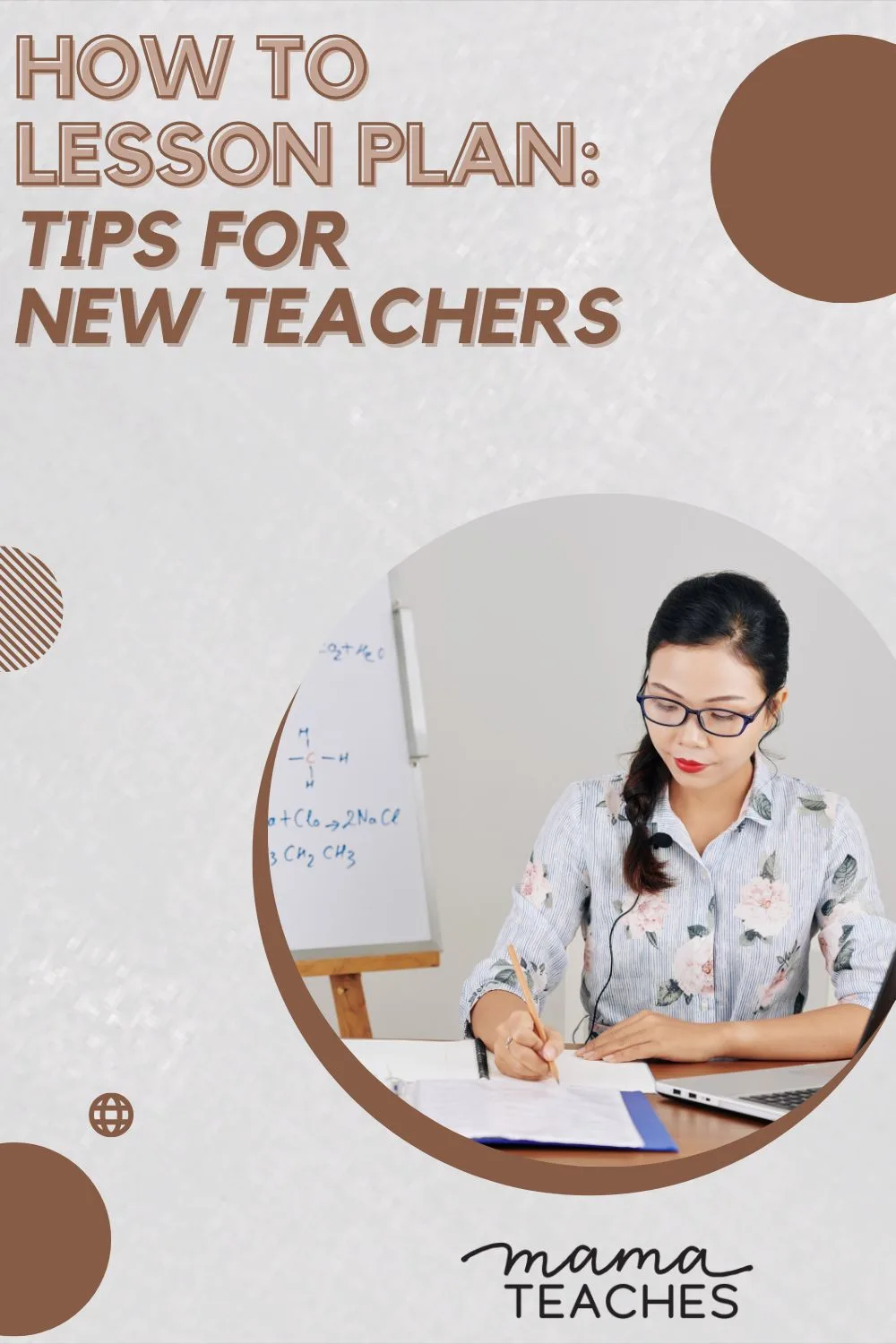
Tips for Your First Lesson Plans
If you are a new teacher, keep these tips in mind.
It’s Okay to Script Your Lessons
If you are nervous, feel free to write a lesson script. That’s perfectly fine!
Remember the Opening
Your opening activity is a critical part of your lesson. This is how you snag your students’ attention.
Don’t skip this!
You can start with a hypothetical question, fun facts, a visual aid, a demonstration, a story, or a quick and silly quiz.
Tell Them the Plan
People like knowing what to expect, and this includes your students.
You worked on your lesson plan; now share it!
Tell your students what they will learn (your lesson objectives), and list the upcoming activities at the start of your lesson.
Your students will easily transition if they know what’s ahead.
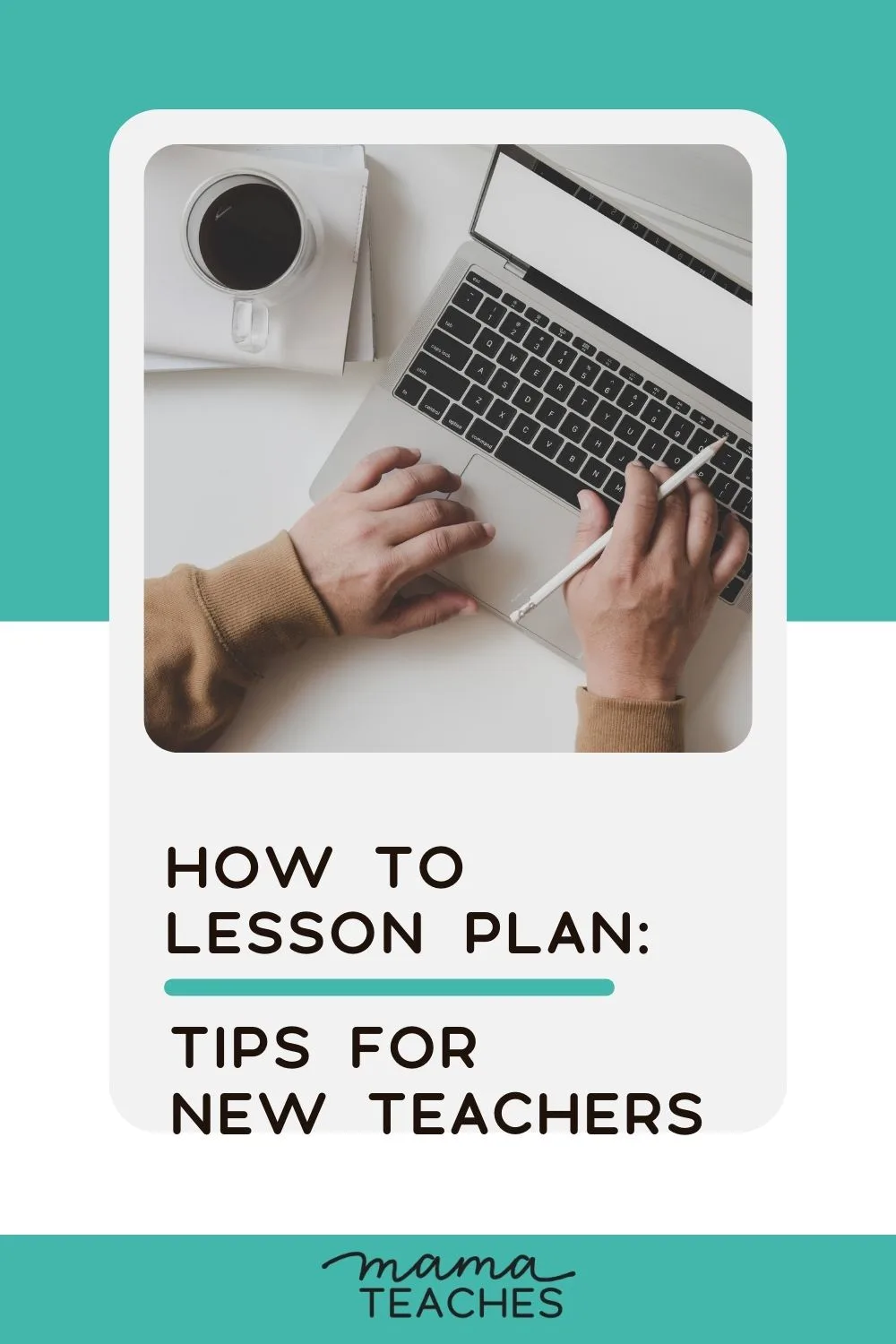
Be Flexible (But Not Too Much)
While you have timed your lesson to the minute using the timeline of activities, know that you will need to flex.
Some activities will take longer. Others will take less time than you anticipate.
Give yourself some wiggle room, but don’t throw the schedule out the window.
Your goal is to complete your objectives in each lesson.
Tailor When Necessary
Although your lesson plan may work seamlessly for most students, you may have students with various exceptionalities.
Consider how you can adapt the various activities to accommodate your students’ needs.
Use Different Learning Modes
One-on-one, group work, pair work, individual learning, or lecture style…you have many different learning modes to choose from.
Everyone learns differently, so mix it up!
Appeal to Various Learning Styles
Some students are primarily visual learners. They need to see something to remember it.
Others are auditory learners. They need to hear the content spoken aloud.
Still others are kinesthetic learners who learn best by doing hands-on activities.
Teachers traditionally gravitate toward visual and auditory learning styles, but remember to add a healthy dose of hands-on activities.
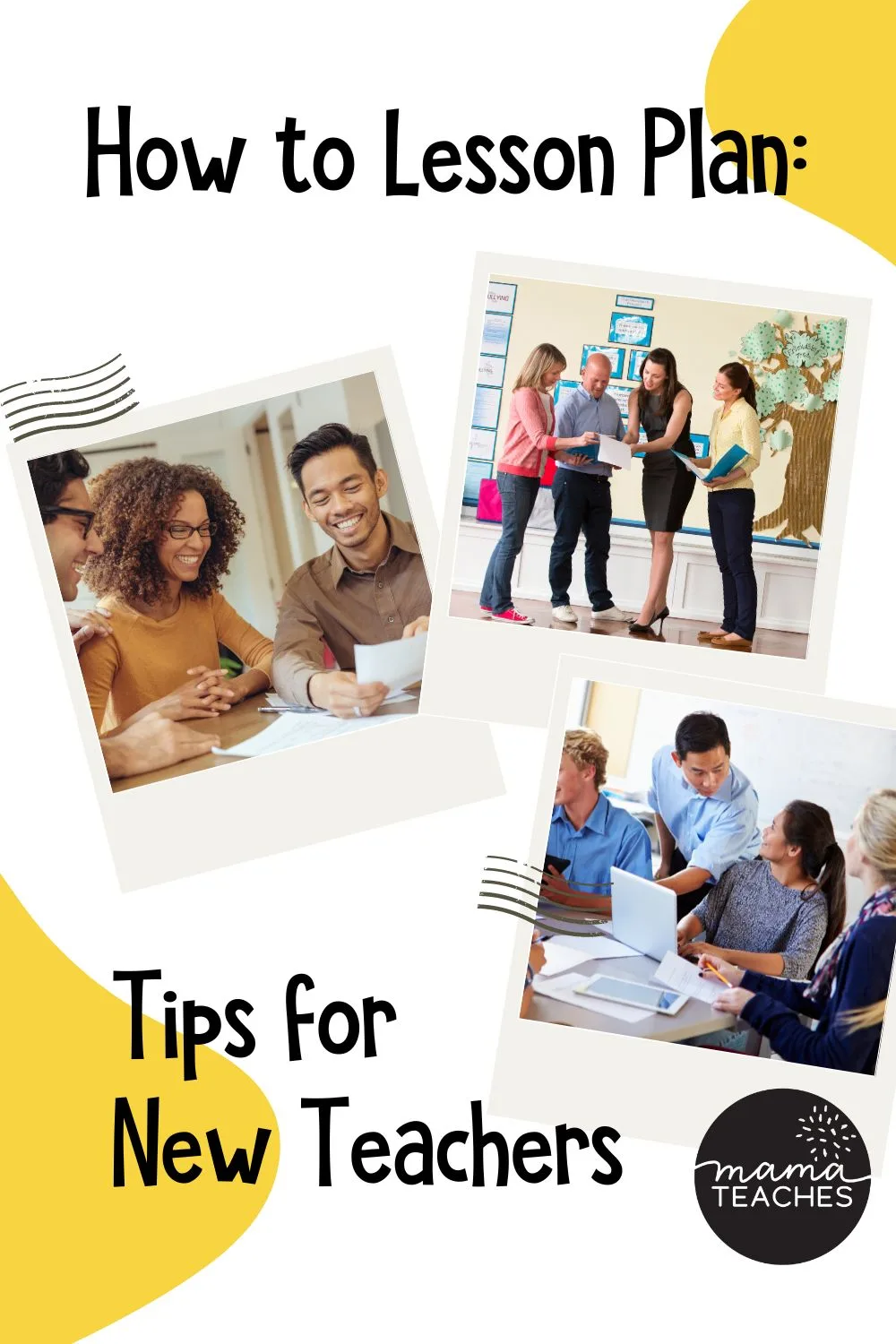
Add a Just-in-Case Activity
Sometimes, a lesson will take less time than you think.
You may also have early finishers who will get bored if you have nothing else planned.
Have an activity ready to fill time if needed.
This is typically a reinforcement activity like a fun worksheet or game.
Make Your Lesson Plans Sub-Friendly
You are the primary user of your lesson plans, but occasionally, you must provide lesson plans for a substitute teacher.
Make sure your lesson plans are easy to read.
While some abbreviations are okay (like SWBAT), don’t use a lot of personal shorthand.
This way, you can send your sub your lesson plan without redoing it.
Make a Second Copy
Unless your lesson plans are online, make a second copy of your plans.
If you miss school at the last minute, your substitute can access a copy.
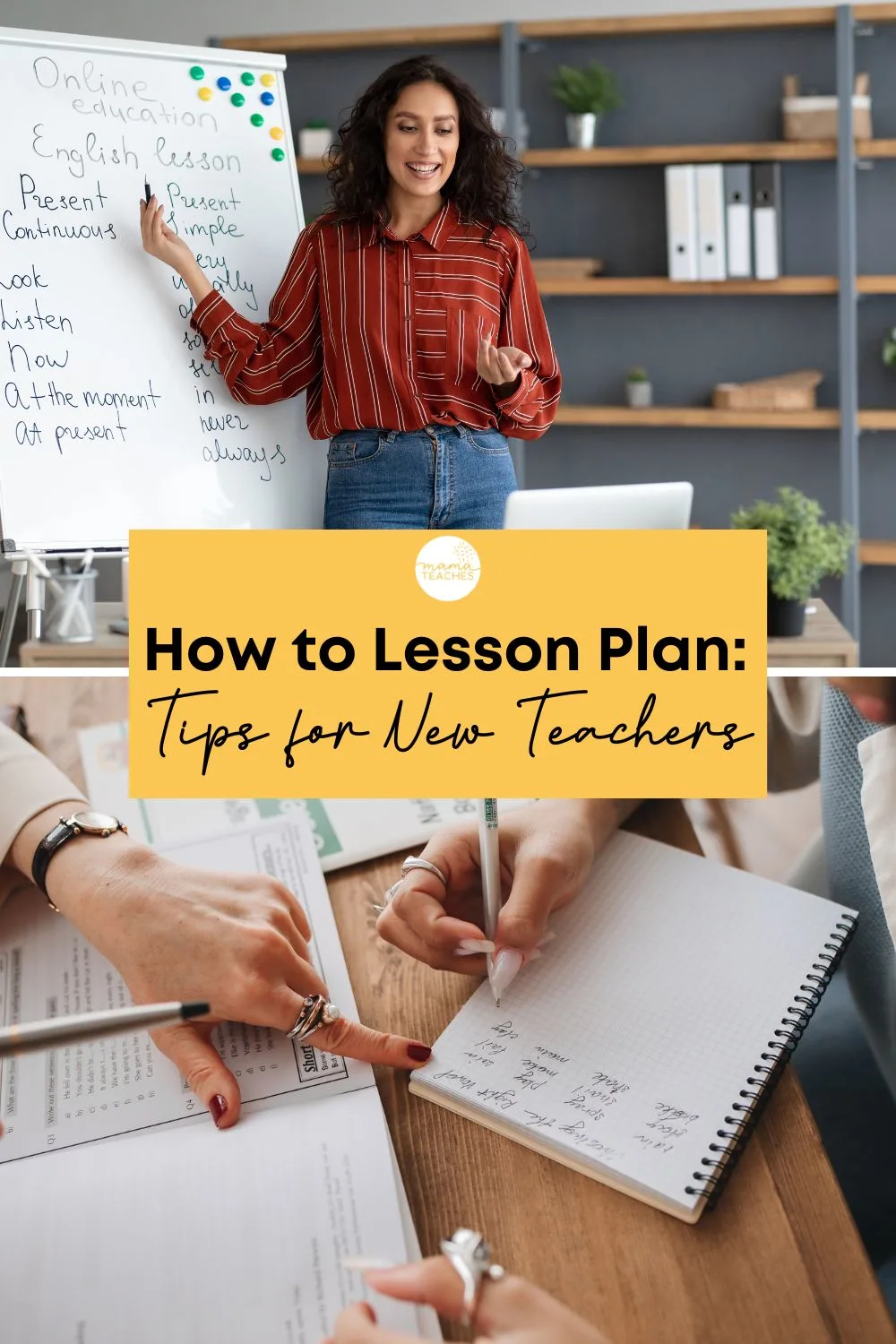
How to Lesson Plan in 6 Steps
These are the six steps of how to lesson plan for new teachers.
That’s it! You do six things!
By doing these six steps over and over, you will quickly learn the routine.
You will also learn what works for you and your students.
